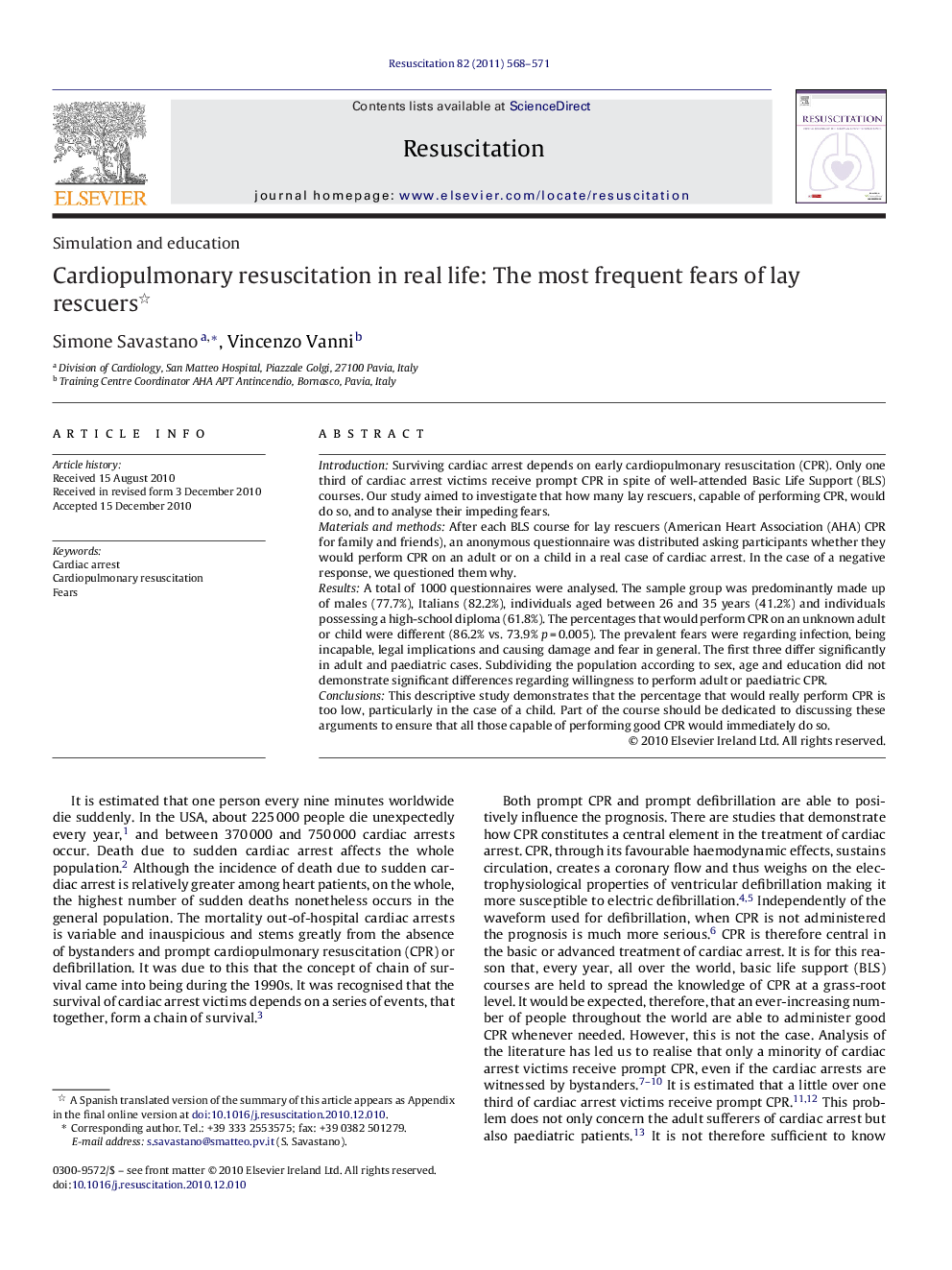| کد مقاله | کد نشریه | سال انتشار | مقاله انگلیسی | نسخه تمام متن |
|---|---|---|---|---|
| 3009676 | 1181494 | 2011 | 4 صفحه PDF | دانلود رایگان |

IntroductionSurviving cardiac arrest depends on early cardiopulmonary resuscitation (CPR). Only one third of cardiac arrest victims receive prompt CPR in spite of well-attended Basic Life Support (BLS) courses. Our study aimed to investigate that how many lay rescuers, capable of performing CPR, would do so, and to analyse their impeding fears.Materials and methodsAfter each BLS course for lay rescuers (American Heart Association (AHA) CPR for family and friends), an anonymous questionnaire was distributed asking participants whether they would perform CPR on an adult or on a child in a real case of cardiac arrest. In the case of a negative response, we questioned them why.ResultsA total of 1000 questionnaires were analysed. The sample group was predominantly made up of males (77.7%), Italians (82.2%), individuals aged between 26 and 35 years (41.2%) and individuals possessing a high-school diploma (61.8%). The percentages that would perform CPR on an unknown adult or child were different (86.2% vs. 73.9% p = 0.005). The prevalent fears were regarding infection, being incapable, legal implications and causing damage and fear in general. The first three differ significantly in adult and paediatric cases. Subdividing the population according to sex, age and education did not demonstrate significant differences regarding willingness to perform adult or paediatric CPR.ConclusionsThis descriptive study demonstrates that the percentage that would really perform CPR is too low, particularly in the case of a child. Part of the course should be dedicated to discussing these arguments to ensure that all those capable of performing good CPR would immediately do so.
Journal: Resuscitation - Volume 82, Issue 5, May 2011, Pages 568–571